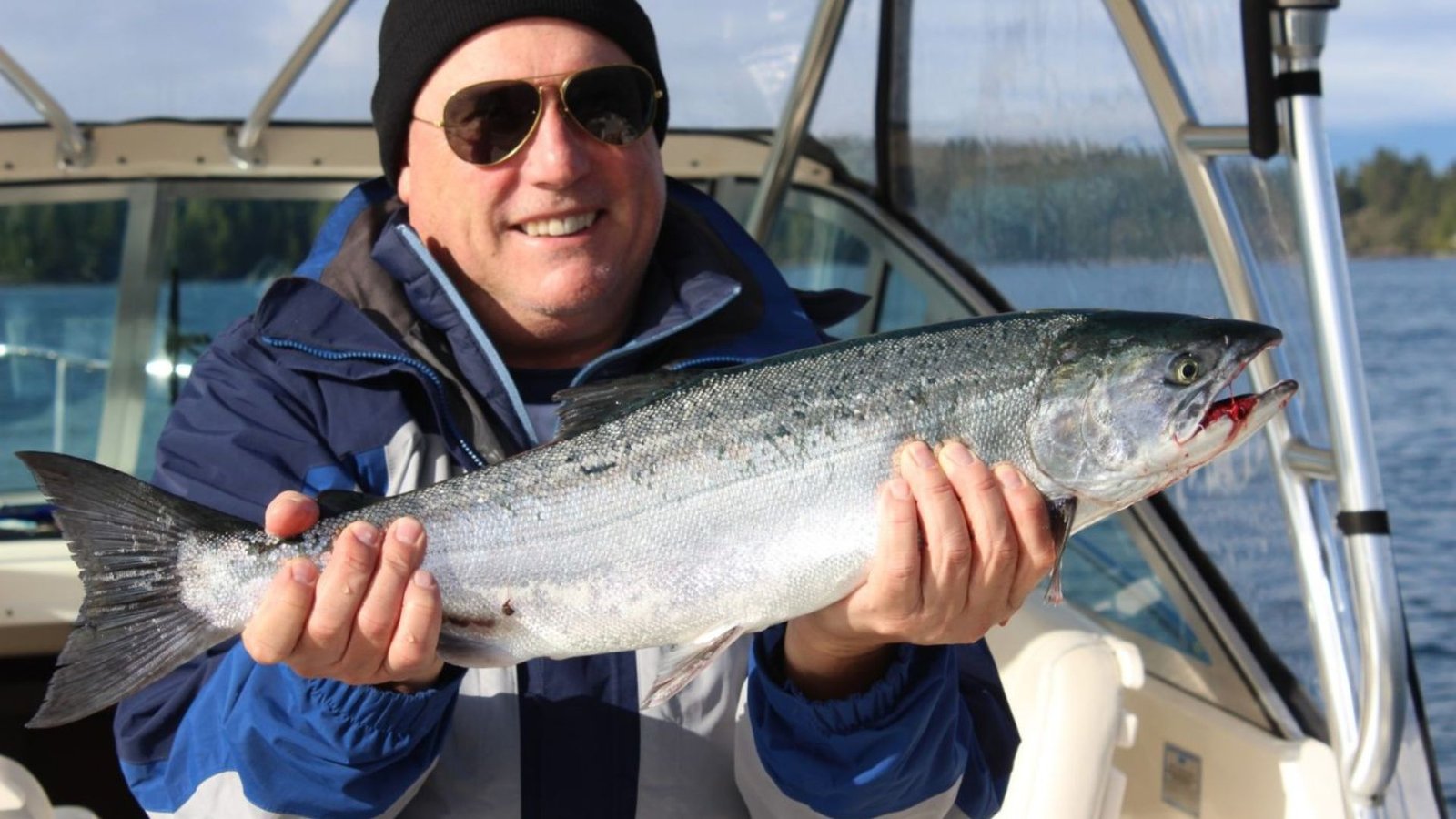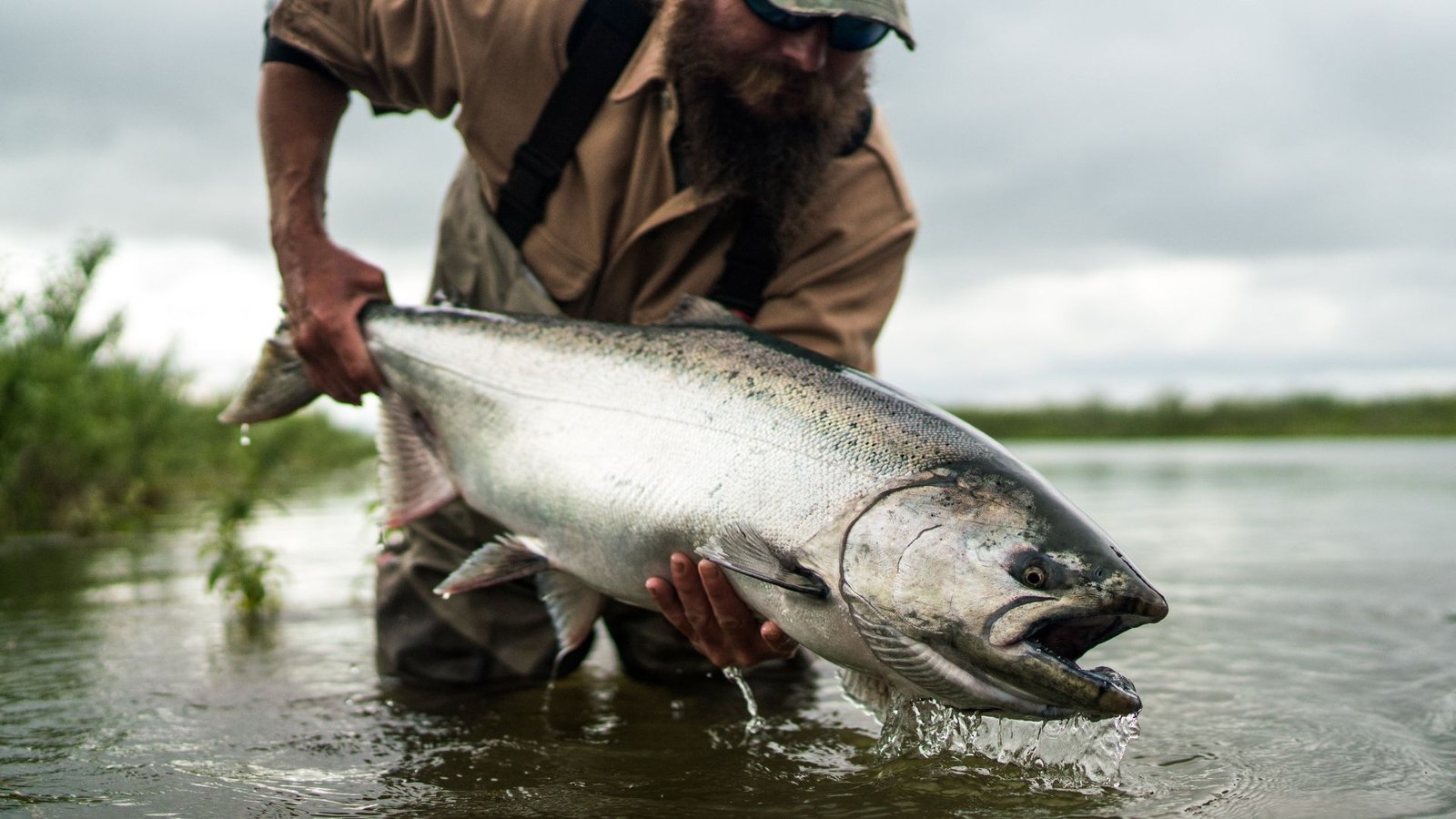Fishing with a salmon fly in saltwater is an exciting adventure that offers the chance to catch a variety of powerful and aggressive fish species. Saltwater fly fishing requires adapting your techniques to the marine environment, but with the right approach, it can be incredibly rewarding.

How to Fish with a Salmon Fly in Saltwater
1. Understanding Saltwater Environments
a. Know Your Target Species: Research the species you’ll be targeting in saltwater, such as striped bass, redfish, tarpon, or bonefish. Understand their habits, preferred habitats, and feeding patterns.
b. Study the Tides: Tides play a crucial role in saltwater fishing. Learn how to read tide charts and understand how tidal movements affect fish behavior. Fish are often more active during incoming or outgoing tides.
c. Observe Water Conditions: Pay attention to water clarity, temperature, and current. These factors can influence where fish are located and how they behave.
2. Selecting the Right Gear
a. Saltwater-Ready Rod and Reel: Use a fly rod and reel designed for saltwater fishing. These are typically more robust and corrosion-resistant than freshwater gear. A 9-weight rod is a good all-around choice for many saltwater species.
b. Fly Lines and Leaders: Choose a fly line that matches your rod weight and is designed for saltwater use. Intermediate or sinking lines can be useful for getting your fly deeper in the water column. Use strong, abrasion-resistant leaders and tippets.
3. Choosing the Right Salmon Flies
a. Saltwater Fly Patterns: Select flies that imitate the natural prey of your target species. Popular patterns include Clouser Minnows, Deceivers, and shrimp or crab imitations. Use flies in various sizes and colors to match the local forage.
b. Weighted Flies: Consider using weighted flies to help your fly sink quickly in deeper waters. This can be particularly useful when fishing in strong currents or deeper channels.
4. Casting Techniques for Saltwater
a. Long Distance Casting: Saltwater fishing often requires longer casts than freshwater. Practice your casting to achieve greater distances, which can help you reach fish that are farther away from shore or in deeper water.
b. Accurate Casting: Precision is key in saltwater fly fishing. Work on your accuracy to place your fly exactly where fish are likely to be. Casting to structures like mangroves, rocks, or sandbars can be very effective.
5. Presenting the Fly
a. Strip Retrieve: Use a strip retrieve technique to give your fly a lifelike action. Vary the speed and length of your strips to mimic the movement of different prey items. Fish often strike during the pause between strips.
b. Sight Fishing: In clear waters, look for signs of fish such as tailing, wakes, or feeding activity. Cast ahead of the fish and retrieve your fly in a way that crosses their path naturally.
6. Handling and Releasing Fish
a. Proper Fish Handling: Use a landing net to minimize stress on the fish. Wet your hands before handling them and avoid touching their gills or eyes. Keep the fish in the water as much as possible.
b. Catch and Release: Practice catch and release to help preserve fish populations. Use barbless hooks to make releasing fish easier and quicker, ensuring they return to the water healthy.
Conclusion: The Thrill of Saltwater Fly Fishing
Fishing with a salmon fly in saltwater combines the thrill of the chase with the beauty of the marine environment. By understanding the unique aspects of saltwater fishing, selecting the right gear and flies, and perfecting your casting and retrieval techniques, you can enjoy a successful and memorable fishing experience. Whether you’re targeting striped bass along the coast or bonefish on a tropical flat, the adventure and challenge of saltwater fly fishing are unmatched. Embrace the opportunity, respect the environment, and relish the moments spent pursuing these powerful fish.




